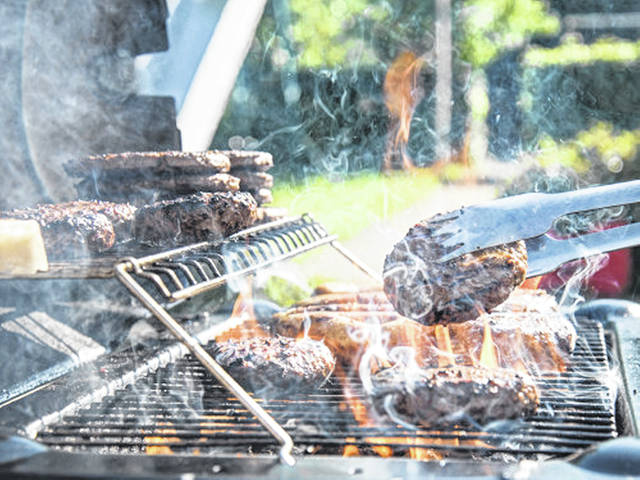
Question: We plan to grill this weekend, but my husband and I can’t seem to agree on how to cook the hamburgers. I like them medium rare like a steak, but my husband says the burgers should be cooked until they are well done. Which one of us is right?
Answer: Unlike steaks, hamburgers, and any ground beef meals, should be cooked until they reach an internal temperature of 160 degrees Fahrenheit to help lessen your chance of developing a foodborne illness, said Sanja Ilic, the state food safety specialist for Ohio State University Extension. OSU Extension is the outreach arm of The Ohio State University College of Food, Agricultural, and Environmental Sciences (CFAES).
Even though beef steak and ground beef are both beef, steak can be safe to eat at a minimum internal temperature of 145 degrees Fahrenheit, while ground beef has to reach the higher cooking temperature, according to the U. S. Department of Agriculture Food Safety and Inspection Service.
In this case, “safe” means the food is heated for a long enough time and at a high enough temperature to kill the harmful bacteria that cause foodborne illness.
So why the temperature difference between when a steak is considered safe and when ground beef is considered safe?
It’s because harmful bacteria that may be present on the surface of a whole, intact, cut of meat like steak will be killed off when you cook the steak. However, when that beef is ground into hamburger meat, the bacteria that was on the surface is now mixed throughout, necessitating the need for the meat to be cooked to an internal temperature high enough to kill bacteria on both the outside and inside of the burger.
Cube steak should also be cooked to 160 degrees, Ilic said.
“Cube steak is a cut of beef that has been mechanically tenderized by piercing the muscle fibers and connective tissues with small blades or needles to improve meat tenderness,” she said. “So when cooking hamburgers and cube steak, turning the patties twice during the cooking process will even the temperature and eliminate more bacteria than a single flip.”
Ilic also advises that consumers always use a food thermometer to make sure the meat has reached a safe internal temperature, inserting the thermometer into the thickest part of the meat.
“Do not rely on color to tell whether a burger is done,” she said. “A burger can be undercooked even if it is brown in the middle. The only way to know if the meat is safe to eat is to use a food thermometer.”
Other safety tips USDA offers regarding ground beef include:
Store ground beef at a temperature of 40 degrees or lower within two hours after purchase. You should use the meat or freeze it within two days of purchase.
Thaw meat in the refrigerator instead of on the counter or in the sink.
Raw foods need to be kept chilled before grilling and uneaten cooked foods need to be stored at the appropriate temperature to avoid spoiling.
After cooking ground beef, refrigerate it within two hours and use it within three to four days.
It’s also important to note that the USDA Food Safety and Inspection Service issued a recall the week of May 19 for more than 62,000 pounds of raw beef due to E. coli concerns. The recalled products were packaged on April 19 and have the establishment number “EST. 788” inside the USDA mark of inspection.
The recall includes more than 40 beef products including ribeyes, ribs, and brisket cuts.
Additionally, as of May 13, the Centers for Disease Control and Prevention were investigating a multistate outbreak of Shiga toxin-producing E. coli O103 infections linked to some ground beef. At least two companies have recalled thousands of pounds of ground beef as a precaution, although the CDC said that no common supplier, distributor, or brand of ground beef has been identified as causing the breakout.
To date, there have been 196 reported cases of people sickened with E. coli as part of this outbreak, with at least 12 of those cases in Ohio, the CDC said. At least 28 people have required hospitalization. Recalled products are labeled with establishment number “EST. 21781” or “EST. 51308” inside the USDA mark of inspection on the boxes, according to the CDC.


